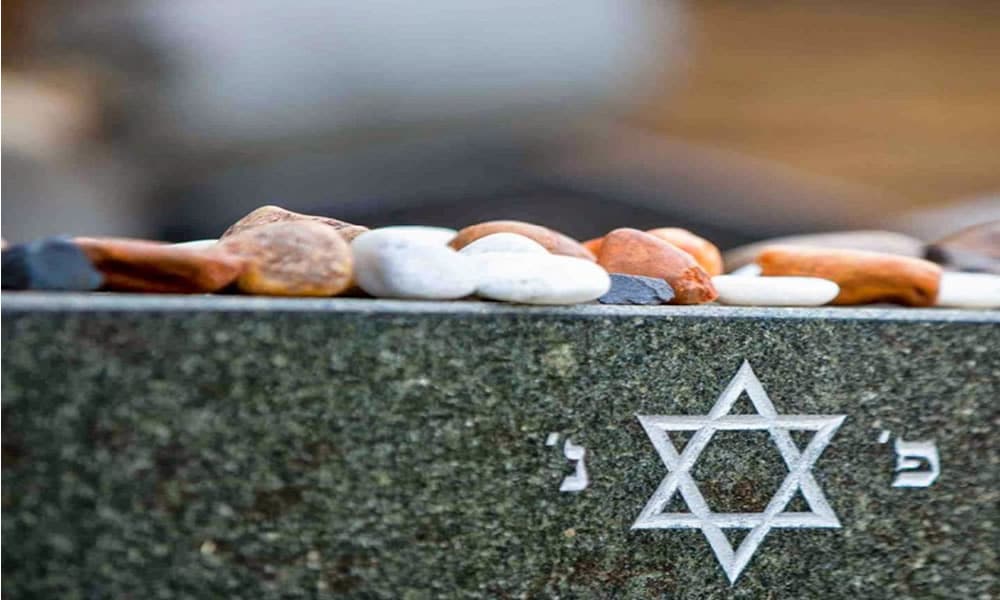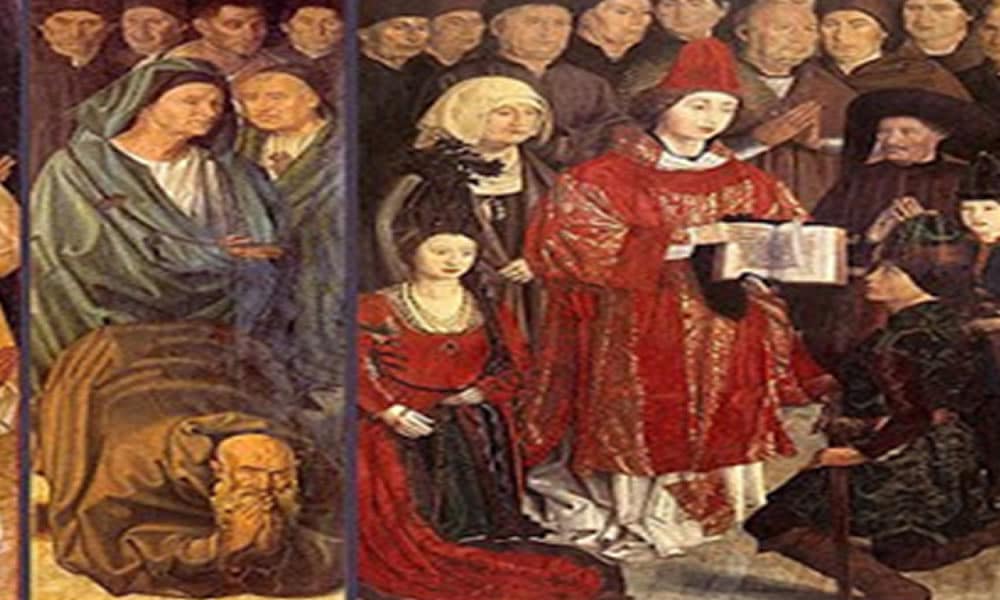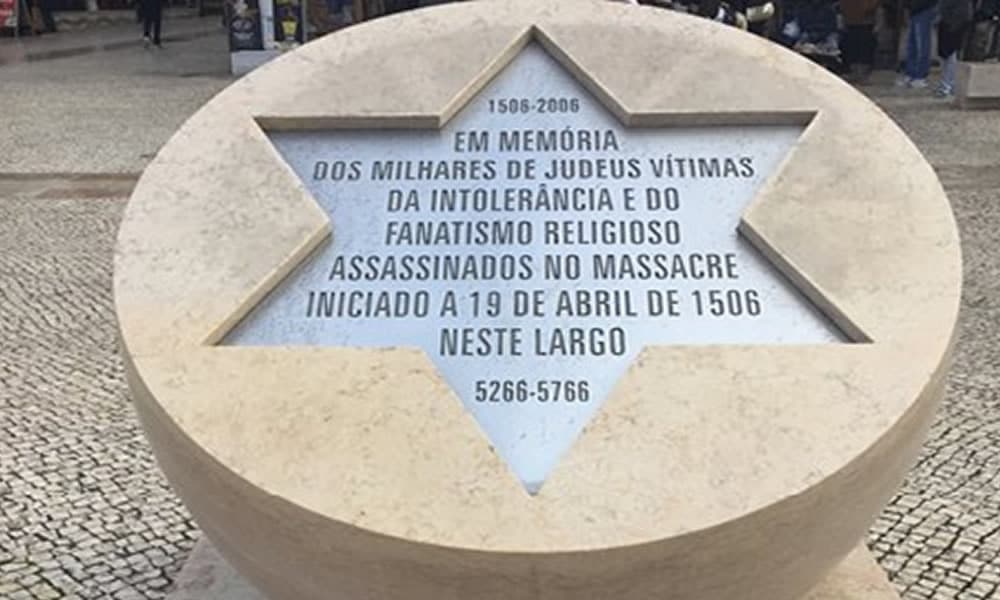JEWISH HERITAGE – Author Trip
JEWISH HERITAGE – Author Trip
 The Jewish Tours are journeys with signature, a new concept for travelling with an author, the “Alexandre Castanheira” Author Journey. This tours with signature are designed by an expert in Jewish tourism, where the client will know the true history of Judaism, out of the main touristic paths.
The Jewish Tours are journeys with signature, a new concept for travelling with an author, the “Alexandre Castanheira” Author Journey. This tours with signature are designed by an expert in Jewish tourism, where the client will know the true history of Judaism, out of the main touristic paths.
Judaism tourism is very important in Portugal because we have a very strong Jewish heritage around 29 places, just here in Portugal. So, it is a very strong pillar in our history that we want to show to you.
This trip is an author trip because it is designed exclusively for Heritage Travel Services by a specialist of Judaism in Portugal. Author journeys are trips with soul that are not in the guides book and it is the opportunity to live a unique experience in which the author accompanies through all the trip and it will make all the difference because you will know the destination as you have never known it before.
Heritage Travel Services is a pioneer in a new way of traveling and knowing the world by the eyes of a specialist.
Heritage Travel Services
See Portugal as you never saw
JEWISH HERITAGE – Author Trip
Tour Plan

DAY 1 – LISBON
Arrival at Lisbon International Airport. Our staff will be delighted to welcome your guests. Panoramic tour to feel Lisbon, bright capital of Portugal. At the hotel, our guide will assist during check-in procedures. Short Briefing tour. Free day.
Portugal has always had a mix of cultures and religions fruit of the presence in our territory of Romans, Visigoths, Arabs and finally Christians. During all these periods, Christians, Jews and Muslims lived together in a more or less peaceful way. The invasion of the Visigoths of the Iberian Peninsula in 587 AD, had a consequence that it had been decreed that the Jews should not hold public office, married with Christian women and practicing circumcision, which was punished by the confiscation of property.
In 683, King Sisebuto was at the origin of the attempt to force the peninsular Jews to choose between baptism or emigration. Although they had been forcibly baptized, the Jews kept the old religion secret. During the Iberian inquisition, 1000 years later, it was argued that their mentors simply tried to incorporate the Visigothic laws. Dinner and overnight at the hotel in Lisbon.
DAY 2 – LISBON
Breakfast buffet. Visit the coolest city of the moment and considered the best city break in the world according to World’s Travel Awards. Lisbon is a city of Phoenician foundation, prior to the 8th century BC., because of the city’s commercial and mercantile importance. We will visit the glamorous Av. Liberdade, starting the route in the majestic Marquês de Pombal square to Rossio, among others interesting places such like Bairro Alto, Chiado, Downtown and Alfama historic neighbourhoods. Walking tour at Alfama’s Judiaria. Here, you will see the Judiaria Street, where the Jewish quarters of Alfama were located, founded in mid-14th century almost alongside the walls of the primitive Moorish wall. The old synagogue built in 1373-1374 was located in front of Judiaria Street and S. Rafael Square. You will visit de memorial of the massacre of jews in 1506. Lunch free.
Contemplate the Tagus River from the Terreiro do Paço, place from where the caravels left in search of new seas. Pedro Nunes was a Portuguese Jewish mathematician who held the post of cosmogroph-mor for the kingdom of Portugal. It was one of the greatest scientific figures that contributed decisively to the maritime epic of the Portuguese discoveries. He was the inventor of several navigational instruments like the nautical ring, the instrument of shade and the nónio (its Latin surname). At Belém district, enjoy the monuments linked to maritime discoveries as Tower of Belém (suggestion to see from outside) and Jerónimos monastery both the UNESCO World Heritage, two magnificent examples of the gothic manueline. Will see also the monument of the discoveries landmark erected in 1960, a caravel-shaped monument, designed to pay homage to the historical figures involved in the Portuguese discoveries.
At the end of the day, you will have dinner in a portuguese traditional restaurant and you will experience the true and the authentic traditional Fado music accompanied by the sound of the portuguese guitar, UNESCO World immaterial Heritage. In 1506, on April 19, Christian paschal Sunday, the social climate lived in Lisbon on this date was one of dread for the plague that plagued the kingdom, magnified by the drought and the hunger that bad years consecutive agricultural had originated. The king takes refuge in Abrantes. At a Mass in the convent of St. Dominic the people regarded as a miracle an incandescent light on the crucifix of the church chapel, where it was interpreted as having divine nature. A new Christian (converted jew) among the assistance recklessly called into question the miracle. A mob massacred him more, and the conditions for a fuse of violence were created and stirred by two fanatical Dominican friars for the next three days chasing new Christians by massacring them. Between two and four thousand people have died. King Manuel I punished those responsible by having about 50 people executed, including the two Dominican friars. Accommodation.
DAY 3 – LISBON | TOMAR | BELMONTE
Breakfast at the hotel. Leaving Lisbon, after checking out, in direction to Tomar, the capital of the Knights Templar, where its synagogue is a must! This synagogue was built between 1430 and 1460 at the place where an ancient synagogue was. King Manuel expelled Jews from Portugal to please his parents-in-law, the Spanish ‘Catholic Monarchs’. But first, you will visit the Convent of Christ – The beginning of its construction dates back to 1160 and is closely linked to the beginnings of the kingdom of Portugal and the role then played by the order of the Templars that have participated in the crusades to Jerusalem, having been reconfigured and expanded in subsequent centuries, when it was settled there the order of Christ. It stands out as one of the most important monumental groups existing in Portuguese territory and is classified as a UNESCO World Heritage Site in 1993. Lunch free.
Visit to Synagogue - Abraão Zacuto Luso-Hebraic Museum. The Synagogue of Tomar is the only Jewish religious building that has remained intact, almost unchanged and fully maintained, since the mid-15th century, when it was built, until today. It is a Renaissance building and was built in the period of close proximity of the Jewish community of Tomar to Henry the Navigator (1394-1460), when the city grew in population and wealth. With a very discreet façade and a quadrangular structure, the interior is full of symbolism: four columns, each with capitals decorated with geometric and vegetal motifs, representing the Matriarchs of Israel, support the roof: Sarah, Rachel, Rebekah and Leah. The columns are linked to twelve arches, symbolizing the twelve tribes of Israel. Continuing we achieve Belmonte. Dinner and Accommodation at the Pousada.
DAY 4 – BELMONTE
Breakfast at the hotel. Visit of the synagogue, castle and the Jewish Museum. Free lunch. The discovery of crypto jews in Belmonte (the only resilient community in the entire Iberian Peninsula to 300 years of inquisition) was made in 1915 by a jew mining engineer, Samuel Schwarz (1880-1953), who was born in Poland. He found that it was mainly the elderly women who knew by heart all the Jewish prayers and who usually presided over the meetings and religious ceremonies of the New Christians (converted jews).
It is a curious fact that they completely ignored the existence of other Jews, different in the cult processes of the New Christians. They thought it strange that a Jew should not seek to make a secret of the Jewish faith and were unaware of the existence of the Hebrew language. One day Schwarz was talking to the hazan - priestess - of Belmonte, when she challenged him to prove that he was Jewish. He made little of a prayer - shemah Israel - in Hebrew and found that every time he pronounced the word Adonai, they covered his eyes, and from there he was allowed to attend secret Jewish ceremonies. As she says, Schwarz at the end of reciting the prayer, the old woman said: He is really Jewish, because he pronounced the word adonai. Accomodation and dinner at the Hotel.
DAY 5 – BELMONTE | TRANCOSO | PORTO
Breakfast at the hotel. Check-out procedures. Today, the day stars by visiting Trancoso. The Jewish community of Trancoso is later than the 14th century, when King Dom Pedro I (1320-1367) authorized the organization of the Jewish quarter, because it was already very large. In the 15th century, the number of members of the community were already greater than the city of Guarda, which led to requesting authorization from king D. João II (1455-1495) to increase the synagogue's size. In addition to the thematic equipment dedicated to the Jewish heritage, the town has a heritage that brings us to an important Sephardic cultural centre.
It is worth highlighting the House of Gato Preto, a medieval building that has various high reliefs in its façade interpreted as Jewish, especially the Lion of Judah. Near this building, traditionally identified as the home of a Rabbi, is the Master well, a well that could provide running water for the ritual baths, the mikveh. The Isaac Cardoso Interpretation Centre for Jewish Culture is a modern building, which includes a synagogue. The exhibition on Sephardic heritage of Trancoso is well worth a visit. The House of Bandarra, near the Isaac Cardoso Interpretation Centre for Jewish Culture, dedicates its exhibition to the shoemaker, poet-prophet Bandarra, a unique figure of Portuguese messianic, clearly influenced by Jewish culture. Continue to Lamego. Lunch light in Lamego.
Lamego was once a very important town and it is known that since 14th Century that Jews occupied the area between the castle and Santa Maria of Almacave Church. The further century, Jews were already spread in two neighbourhoods: the old (judiaria da velha) at Porta do Sol ad the new at Santa Maria de Almacave churchyard. Accommodation at Oporto and dinner at the hotel.
DAY 6 – PORTO
Breakfast in the hotel. City tour Oporto and boat trip on the river Douro 50 minutes. The Jewish population of Oporto must have had a significant impact with the Charter - the document that organized the city in terms of administration – given by the Bishop of Oporto, D. Hugo in 1123. This Charter gave significant incentives to trade and to those who settled in the city, to attract people to the village. As the town grew economically and culturally, the community also increased. There must have been three Jewish quarters: The Old Jewish quarter, in Aldas Street (currently Sant’Ana Street) across to Escura Street and to Chã Street; Monchique Jewish quarter, outside the walls, in Miragaia; and the Nova do Olival Jewish quarter, again within the walls. Today, the main traces can be seen in what was the Nova do Olival Jewish quarter, where D. João I (1357-1433) ordered authorities to concentrate the Jews in 1386.
The Synagogue of this Jewish quarter was probably located where the Monastery of São Bento da Vitória is today, near the old jail. Delimited by the current S. Bento da Vitória Street, by the stairs of Vitória, old Escadas da Esnoga, and the Belmonte Street, the main axis of the Jewish quarter was S. Miguel Street, where the main merchants of the community lived. A possible secret synagogue was recently found in no 9-11 of S. Miguel Street. The Hejal is well preserved and can be visited. The intellectual and writer Immanuel Aboab (1555-1628) as a childhood memory recalls that after having immigrated, he used to go to this synagogue to pray with his parents. The current Israeli Community of Oporto was founded in 1923 by the initiative and commitment of the then Captain Barros Basto and by a group of Jewish merchants from Eastern and Central Europe, in a town where there was no Jewish community since the expulsion and forced conversion of 1496-7. The community built the Kadoorie Synagogue - Mekor Haim (Source of Life), the largest synagogue in the Iberian Peninsula and one of the largest in Europe where one will find the Oporto Jewish Museum in the 1st floor.
The Jewish population of Oporto must have had a significant impact with the Charter - the document that organized the city in terms of administration – given by the Bishop of Oporto, D. Hugo in 1123. This Charter gave significant incentives to trade and to those who settled in the city, to attract people to the village. The community built the Kadoorie Synagogue - MekorHaim(Source of Life), the largest synagogue in the Iberian Peninsula and one of the largest in Europe where one will find the Oporto Jewish Museum in the 1st floor. Dinner at Kosher Kadoorie. Accommodation.
DAY 7 – PORTO | AVEIRO | COIMBRA | ÓBIDOS | LISBON
Breakfast in the hotel. Check-out procedures after breakfast buffet at the hotel. Leaving Oporto, departure to Venice! Portuguese ‘Venice’, Aveiro, this beautiful city full of canals. After you will experience a traditional boat cruise with regional pastry degustation included and a visit to the salt. We will continue to Coimbra, home of the oldest university, is one of the oldest in the world still in operation (728 years). On June 2013 it was declared a Unesco World Heritage site. Here, in addition to a magnificent view of the city, we can also visit the magnificent 18th- century Johannine library. It has a distinctly baroque style.
In 2013 the British newspaper The Telegraph considered this library as “the most spectacular in the world”. Here is the Hebrew Bible of Abravanel, is one of the most important and rare books that are in this library. It is a sacred book that was handwritten in 1450, in Lisbon, commissioned by a Jew Isaac Abravanel. Was edited in Moguncia, in the graph that belonged to German Gutenberg. We will continue our day in search of the medieval ‘queens’ village of Óbidos. It seems a place stood still in time and we will wonder how it should be in medieval times. Before leaving you’ll be invited to taste a cherry liquor with a spice of cinnamon called ‘ginjinha’. Accommodation & Dinner at the Hotel.
DAY 8 – LISBON
Breakfast at the hotel.
Check-out procedures. Transfer to the airport and guidance attendance until check-in. Farewell. End of our services.














